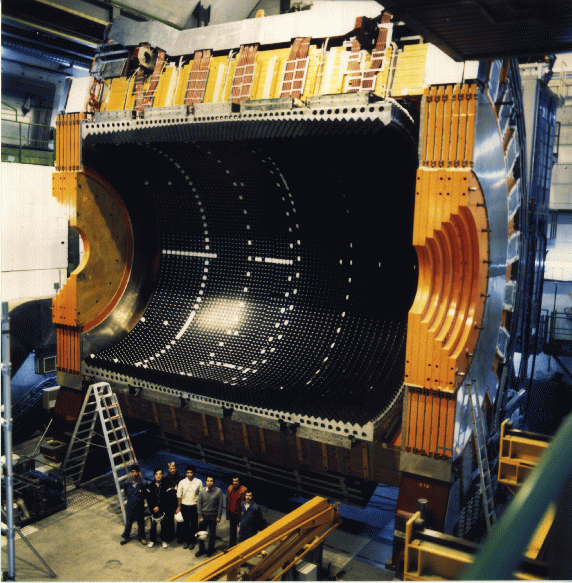
The OPAL Electromagnetic Calorimeter
With their successful backgrounds at DORIS and PETRA, the physicists from University of Tokyo, together with their international colleagues, proposed an experiment at LEP. They have formed an international collaboration OPAL (Omni Purpose Apparatus for LEP). The experiment was officially approved in 1982 by the LEP Committee. In 1984 LICEPP was succeeded by a new laboratory, the International Center for Elementary Particle Physics (ICEPP), Faculty of Science, Univ. of Tokyo, with a term of 10 years.

ICEPP took charge of the electromagnetic calorimeter (above picture), one of the most important part of the experiment, which consists of approximately 10,000 leadglass counters. After the five years of design, construction, calibration, and alignment, the calorimeter became ready for the experiment in July, 1989. Every single counter has since been working with high quality of performance. This successful operation of the detector owed a lot to the experiences obtained at the JADE experiment.
The first Z event at LEP was detected by this calorimeter in August, 1989, during the pilot run of the accelerator. By the end of 1995, the OPAL experiment has collected approximately five million Z events. As a result, the properties of the Z particle have been studied with an unprecedented precision, and it has lead to many important physics achievements: